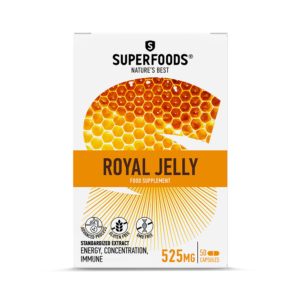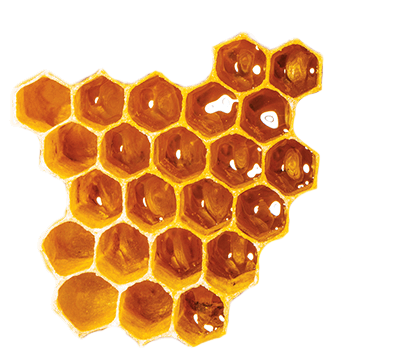

Royal Jelly
Main Ingredients: 10-HDA
Geographical Spread
Royal Jelly is derived from the subalbital and submandibular bee glands. In bee society, it is mainly used to feed the larvae which end up in adult queens. In particular, when workers decide that they need a new queen because the former is either weak or dead, they feed the young bees with royal pulp to find a new queen. Although the workers share the same genome with the queen, the latter lives for a much longer period of time. This is attributed to the Queen's special 'eating habits', which is exclusively fed with royal jelly (Yang, Tian, Han, & Xiaoqing, 2017).

Historical Features
In recent years, research has been carried out on the beneficial properties of royal jelly, which is also being studied in other organisms, such as animals. Extensive research has also been made about the effect of Royal Jelly in memory. Based on laboratory evidence in elderly mice, it works positively in memory confirming the traditional use of Royal Pulse to promote quality of life in the elderly (Pyrzanowska, et al. , 2014).
Pharmaceutical Use
Ένα πολύ ενδιαφέρον παράδοξο από την κοινωνία της μέλισσας, είναι ότι παρόλο που οι εργάτριες μοιράζονται το ίδιο γονιδίωμα (DNA) με τη βασίλισσα, η τελευταία ζει για πολύ μεγαλύτερο χρονικό διάστημα. Το δεδομένο αυτό αποδίδεται στις ιδιαίτερες ‘διατροφικές συνήθειες της βασίλισσας’, η οποία τρέφεται αποκλειστικά με βασιλικό πολτό (Yang, Tian, Han, & Xiaoqing, 2017).

Phytochemical Composition
Royal Jelly is composed of lipids, fructose, glucose, sucrose and precious 10-hydroxydecenoic acid (10-HDA). Royal jelly also contains special proteins, called Major Royal Jelly Proteins (MRJPs). The latter have been extensively studied in conjunction with improved memory loss and proved to have very positive results (Chen, Liu, Wan, Lai, & Shen, 2017).
- Chen, D., Liu, F., Wan, J.-B., Lai, C.-Q., & Shen, L. (2017). Effect of Major Royal Jelly Proteins on Spatial Memory in Aged Rats: Metabolomics Analysis in Urine. Journal of Agricultural and Food Chemistry, 1-33.
- Pyrzanowska, J., Piechal, A., Blecharz-Klin, K., Joniec-Maciejak, I., Graikou, K., Chinou, I., & Widy – Tyszkiewicz, E. (2014). Long-term administration of Greek Royal Jelly improves spatial memory and influences the concentration of brain neurotransmitters in natyrally aged Wistar male rats. Journal of Ethnopharmacology, 343-351.
- Yang, W., Tian, Y., Han, M., & Xiaoqing, M. (2017). Longevity extension of worker honey bees (Apis mellifera) by royal jelly: optimal dose and active ingredient. Peer J.
Similar Products



